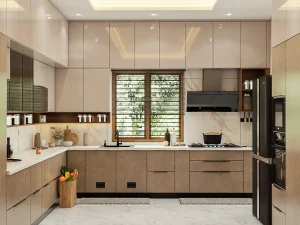
The number one noise complaint from apartment tenants is impact noise from footsteps, dropped items and furniture moving. The right floor soundproofing solution can reduce this noise and make for happier neighbors.
Most apartment buildings are built without soundproofing and adding it afterward is expensive and difficult. However, renters have non-intrusive options for reducing noise that don’t involve structural modifications.
Impact Noise
If you’re dealing with impact noise (like footsteps from above) you’ll need to address the problem by preventing sound waves from transmitting between floors. This is where soundproofing mats are most effective. You can choose from a range of shapes and sizes, or even DIY your own pattern to match your decor. These mats can be placed under heavy items such as furniture and will absorb the impact of vibrations caused by your upstairs neighbors walking around.
If you’re renting your apartment, laying down wall-to-wall carpet might not be an option. If that’s the case, try adding sound-absorbing decor, such as rugs, to reduce airborne noise. You can also reduce airborne noise by sealing gaps around doors and windows. This can be as simple as using silicone adhesive-backed gasket strips to create a tight seal. This will prevent noise from coming in and out of your flat, while keeping out cold air. In the UK, new builds must meet Part E building regulations for resistance to the passage of sound.
Airborne Noise
One of the biggest complaints from apartment dwellers is noise coming from upstairs floors. If the apartment above is playing loud music or having conversations, that noise can travel up through your ceiling and into your living space. This is airborne noise and it can be reduced with the right soundproofing materials.
Unlike impact noise, airborne sound waves cannot be stopped by structure-borne noise reduction measures. But the good news is that flooring underlayment blocks both airborne and structural noise transmission. The first step to reducing airborne noise is forcing the disconnection between the floor surface and the ceiling below. This is done by either raising the flooring or lowering the ceiling below it. The goal is to disconnect the sound waves from the structure so that they die inside your assembly instead of transmitting through it. This is achieved by a layer of high-mass material (typically cork or foam).
Acoustical Materials
The use of acoustic materials helps to reduce the transmission of structural and airborne noise. The acoustic material absorbs or deflects the sound waves, helping to prevent them from passing through the walls and ceiling. This is a useful method to reduce noise in apartments, multi-level homes, hotels and any other building that has people inhabiting multiple floors.
For a more permanent solution to the problem of noise travelling through floor boards, there are a number of acoustic underlays available that can help. These are thicker than normal carpet underlays and can be used for tiled flooring.
The acoustic insulation available can be installed between wall joists or ceiling joists to significantly reduce both impact and airborne noise. Acoustic insulation is often made from rock wool, stone wool or fibreglass and can be installed behind drywall. There are also acoustic door seal kits available that eliminate gaps around doors which can allow sound to transfer.
Underlayments
You might think that sound waves only reach your apartment through walls and ceilings, but they can also pass up through floors. When this happens, it can be just as annoying for people living above you.
One of the easiest ways to stop unwanted sounds from passing through your floors is by laying down some thick rugs. They’ll create a softer space that can absorb sounds, and they’re also a great way to add color and texture to your room.
Another option is to use an acoustic foam underlayment to reduce the amount of noise that passes through your floor. These underlays are typically made from rubber and are super easy to lay under almost any type of flooring.
Wooden floors offer little acoustic insulation, so they tend to let a lot of noise travel through them. Adding an acoustic floor insulation can reduce impact and airborne noise by creating a barrier between the two layers of your wooden floors.







